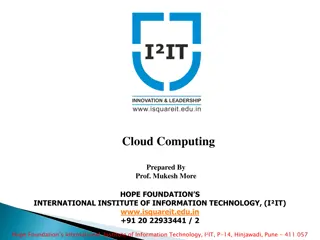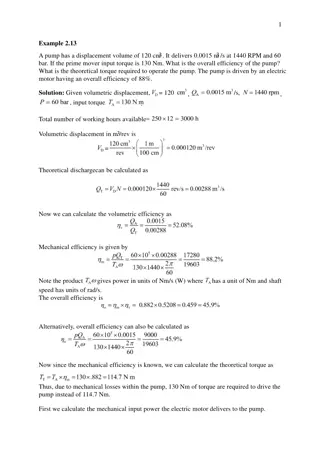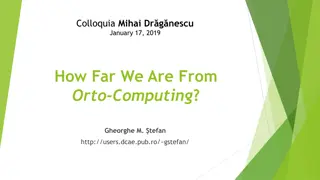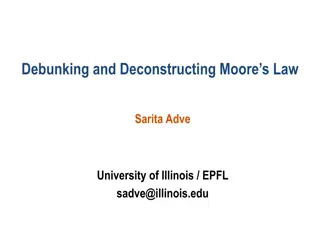Exploring Power Efficiency in Computing Systems
In this lecture series on energy-efficient computing, various concepts related to dynamic frequency scaling, power capping, power shifting, power modeling, and power measurement are discussed. The impact of power on server speed is explored, alongside strategies for improving performance within power constraints. Different controllers and results for stable performance are also presented, highlighting the importance of power management in modern computing systems.
- Energy Efficiency
- Computing Systems
- Power Management
- Dynamic Frequency Scaling
- Performance Optimization
Download Presentation

Please find below an Image/Link to download the presentation.
The content on the website is provided AS IS for your information and personal use only. It may not be sold, licensed, or shared on other websites without obtaining consent from the author. Download presentation by click this link. If you encounter any issues during the download, it is possible that the publisher has removed the file from their server.
E N D
Presentation Transcript
CSE 591: Energy-Efficient Computing Lecture 18 SPEED: power Anshul Gandhi 347, CS building anshul@cs.stonybrook.edu
Recap DFS: Dynamic Frequency Scaling s = + ( ) s s P P Frequency (GHz) min min (server speed) DFS linear P = system power NOT processor power s min P Power (Watts) P 2 min
Recap How power affects server speed for a single server Frequency (GHz) Frequency (GHz) Frequency (GHz) DVFS DVFS +DFS LINPACK CPU BOUND DFS Power (Watts) Power (Watts) Power (Watts) Frequency (GHz) Frequency (GHz) Frequency (GHz) DVFS DVFS +DFS DFS STREAM MEM BOUND Power (Watts) Power (Watts) Power (Watts) 3
Power vs. Performance Label power = 308W
Power shifting Allowing even 1W of extra budget to server can improve performance For rack power budget, power budget can be stolen from low priority servers to give additional power budget to high priority servers Power shifting
Power measurement 1. Directly from hardware or sensors 2. Via simulations 3. Via power modeling Model should be able to provide component- level power consumption
Power model + = + + + P P c u mem c u c u c u idle cpu cpu mem disk disk net net
Power model + = + + + P P c u mem c u c u c u idle cpu cpu mem disk disk net net = 14 (0.236) + + + (4 8) (0.003) (3 8) blade P u E u u E u cpu mem disk net
Power model + = + + + P P c u mem c u c u c u idle cpu cpu mem disk disk net net = 14 (0.236) + + + (4 8) (0.003) (3 8) blade P u E u u E u cpu mem disk net = 636 (0.111) + + + + (4 7) (0.004) (0) itanium P u E u u u cpu mem disk net
Applications of power models 1. Server-specific power profiles 2. Resource bottleneck identification 3. Selective fan cooling 4. Temperature proxy 5. Electricity cost proxy























